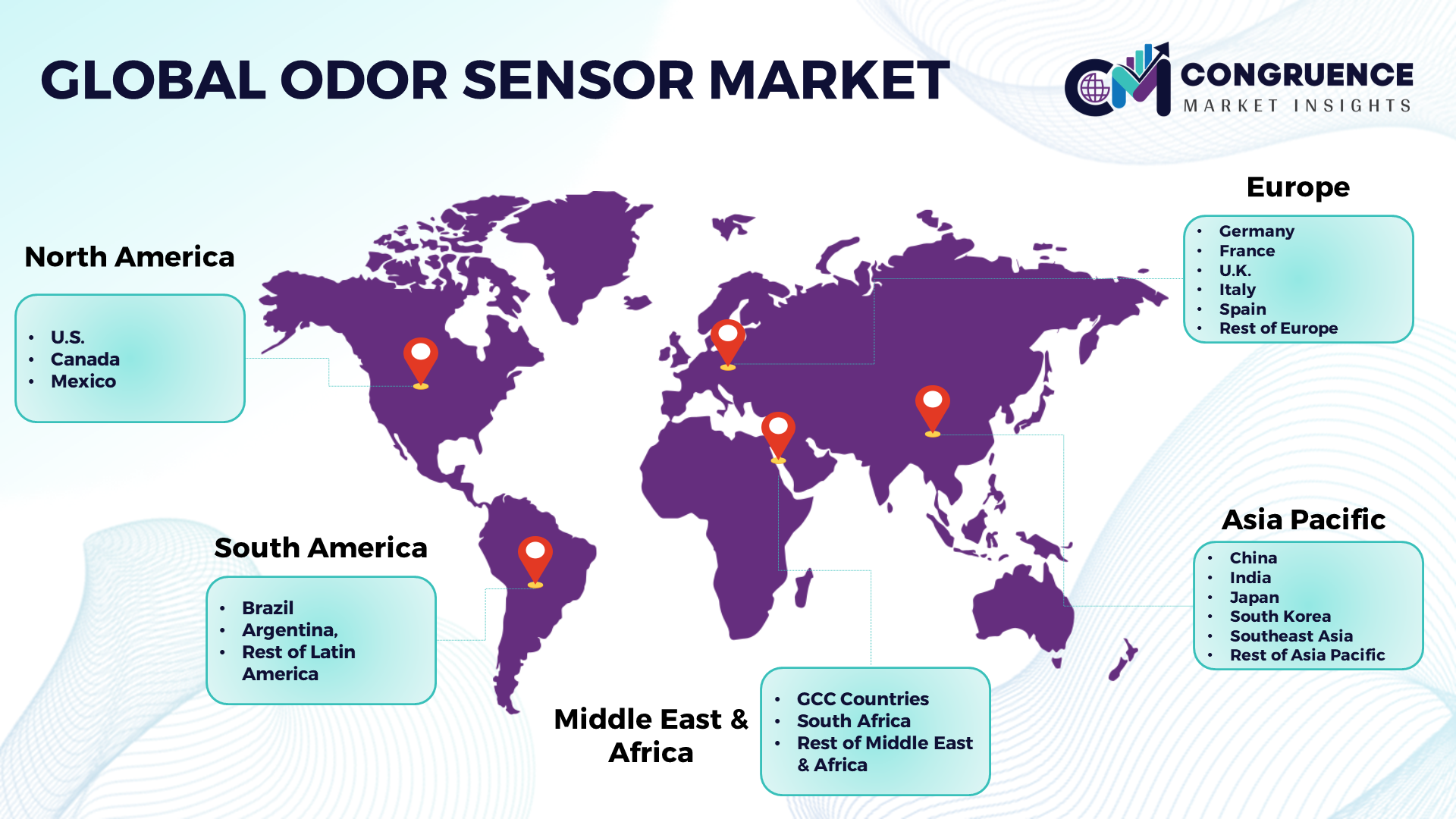Reports
The Global Odor Sensor Market is projected to expand at a remarkable CAGR of 26.7% during the forecast period from 2023 to 2030. Odor sensors, also known as electronic noses (e-noses) or olfactory sensors, are electronic devices capable of detecting and analyzing various odors and volatile organic compounds (VOCs) in the surrounding environment. The odor sensor market is experiencing rapid growth driven by the increasing demand for odor monitoring and control solutions across industries such as environmental monitoring, food processing, healthcare, and industrial manufacturing. Key factors fueling market growth include growing concerns regarding air quality and pollution, stringent regulations on odor emissions, and the rising adoption of odor sensing technologies for quality control and safety applications. Odor sensors utilize various sensing technologies such as conductometric sensors, photoionization detectors, metal-oxide sensors, and quartz crystal microbalance sensors to detect and quantify odorous compounds in different environments.

Odor Sensor Market Major Driving Forces
Growing Concerns Regarding Air Quality: Increasing concerns regarding air pollution and indoor air quality drive the demand for odor sensors in environmental monitoring applications. Odor sensors enable real-time detection and monitoring of volatile organic compounds (VOCs) and odorous gases, supporting efforts to mitigate air pollution and ensure healthier living and working environments.
Stringent Regulations on Odor Emissions: Stringent regulations and standards governing odor emissions in industrial and commercial sectors propel the adoption of odor sensors for compliance monitoring and control. Industries such as wastewater treatment, chemical manufacturing, and food processing are subject to regulatory requirements for odor control and mitigation, driving market demand for odor sensing technologies to monitor and reduce odor emissions.
Rising Adoption in Food & Beverage Processing: The rising adoption of odor sensors in food and beverage processing industries drives market growth, driven by the need for quality control and safety assurance in food production. Odor sensors enable rapid detection of odor contaminants and off-flavors in food products, facilitating early intervention and quality assurance measures to maintain product integrity and consumer satisfaction.
Advancements in Sensing Technologies: Technological advancements in odor sensing technologies, including the development of advanced conductometric sensors, photoionization detectors, and quartz crystal microbalance sensors, contribute to market growth. Manufacturers focus on enhancing sensor sensitivity, selectivity, and response time to meet the evolving requirements of odor monitoring and control applications across various industries.
Odor Sensor Market Key Opportunities
Expansion of Environmental Monitoring Applications: The expansion of environmental monitoring applications presents opportunities for market growth in the odor sensor market. Odor sensors play a crucial role in air quality monitoring, pollution control, and environmental compliance across industries such as wastewater treatment, chemical manufacturing, and waste management, driving market demand for odor sensing technologies in environmental monitoring applications.
Integration with IoT and Smart City Solutions: The integration of odor sensors with Internet of Things (IoT) platforms and smart city solutions presents opportunities for market expansion. Odor sensors can be integrated into IoT networks and smart city infrastructure to enable real-time odor monitoring, data analytics, and predictive maintenance in urban environments, supporting efforts to improve air quality, public health, and urban livability.
Odor Sensor Market Key Trends
· Adoption of Portable and Wearable Odor Sensors: The odor sensor market is witnessing a trend towards the adoption of portable and wearable odor sensors for personal and environmental monitoring applications. Portable odor sensors offer convenience and versatility for on-the-go odor detection, enabling individuals to monitor air quality and exposure to odorous compounds in various indoor and outdoor settings.
· Growth in Healthcare and Medical Applications: The growing adoption of odor sensors in healthcare and medical applications is a notable trend in the market. Odor sensors are utilized in medical devices and diagnostic tools for breath analysis, disease detection, and healthcare monitoring, supporting efforts to improve medical diagnostics, disease management, and patient care.

Market Competition Landscape
The global odor sensor market is characterized by competitive dynamics among key market players striving to enhance their market presence through strategic initiatives. Companies focus on product differentiation, innovation, and partnerships to strengthen their foothold in the market and gain a competitive edge. Key players in the odor sensor market engage in collaborations with environmental monitoring agencies, industrial manufacturers, and smart city developers to develop customized odor sensing solutions and expand their customer base. Prominent players in the global odor sensor market include:
· Alpha MOS
· Odotech
· Airsense Analytics GmbH
· Sensigent LLC
· The eNose Company
· Electronic Sensor Technology
· Scentroid
· Metal Oxide Technologies
· Scensive Technology
|
Report Attribute/Metric |
Details |
|
Base Year |
2022 |
|
Forecast Period |
2023 – 2030 |
|
Historical Data |
2018 to 2022 |
|
Forecast Unit |
Value (US$ Mn) |
|
Key Report Deliverable |
Revenue Forecast, Growth Trends, Market Dynamics, Segmental Overview, Regional and Country-wise Analysis, Competition Landscape |
|
Segments Covered |
· By Type (Conductometric Sensors, Photoionization Detectors, Metal-oxide Sensors, Quartz Crystal Microbalance Sensors, Others) · By Technology (E-nose, S-nose) · By Application (Environmental Monitoring, Food & Beverage Processing, Healthcare, Industrial, Others) · By End-use (Residential, Commercial, Industrial), By Sales Channel (Direct Sales, Distributor Sales) |
|
Geographies Covered |
North America: U.S., Canada and Mexico Europe: Germany, France, U.K., Italy, Spain, and Rest of Europe Asia Pacific: China, India, Japan, South Korea, Southeast Asia, and Rest of Asia Pacific South America: Brazil, Argentina, and Rest of Latin America Middle East & Africa: GCC Countries, South Africa, and Rest of Middle East & Africa |
|
Key Players Analyzed |
Alpha MOS, Odotech, Airsense Analytics GmbH, Sensigent LLC, The eNose Company, Electronic Sensor Technology, Scentroid, Metal Oxide Technologies, Scensive Technology |
|
Customization & Pricing |
Available on Request (10% Customization is Free) |
